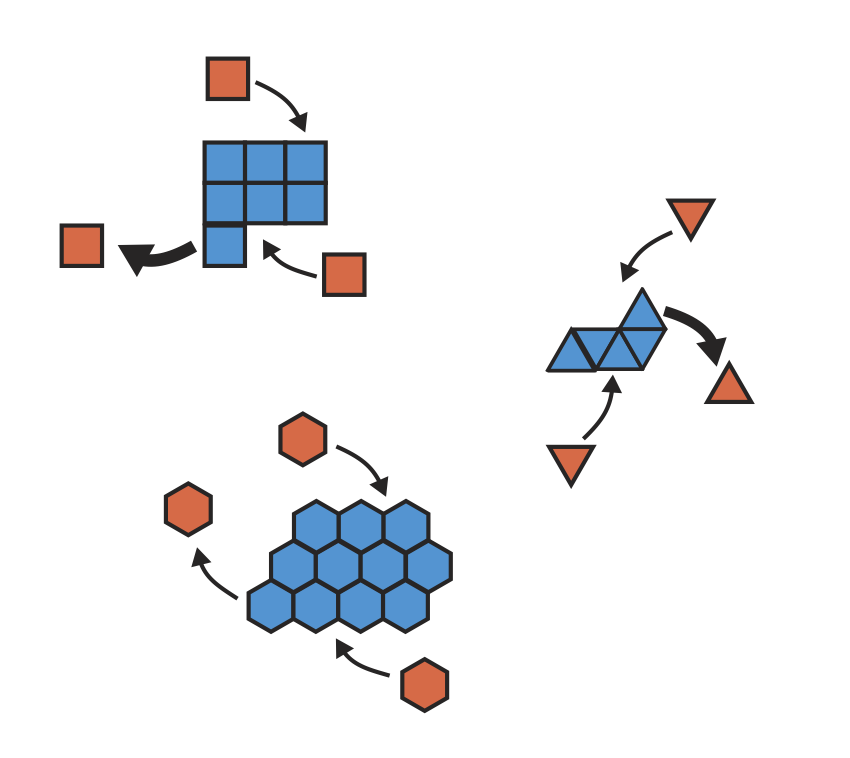Design principles for fast and efficient self-assembly processes
Florian M. Gartner, Erwin Frey

In biology and nanotechnology, tiny building blocks can quickly and robustly come together to form complex structures. In our study, we dive into this world of self-assembly and uncover a crucial factor: morphology, or the shape of these building blocks. While the importance of weak and reversible interactions between building blocks is well understood, our research sheds new light on how their shapes significantly influence the efficiency of self-assembly.
By simulating self-assembly processes using triangular, square, and hexagonal building blocks, we find that the morphology of the building blocks dictates the speed and efficiency of their self-assembly. Hexagonal blocks, for instance, assemble particularly fast, while other shapes may require significantly more time to form the final structures. To understand this phenomenon mathematically, we develop a model that reveals an inherent scaling symmetry. This symmetry allows us to determine how the assembly time scales as a function of the structure size, thereby explaining the vast differences in time efficiency resulting from different monomer morphologies.
By understanding how morphology impacts assembly efficiency, we can design better self-assembly strategies for various applications. For instance, one might guide the assembly process to form intermediate structures with optimal morphologies, ultimately speeding up the overall assembly process.
Looking ahead, our research opens doors to further exploration. For example, we aim to extend our analysis to investigate how spatial arrangements and assembly errors might affect the efficiency and robustness of self-assembly. Our goal is to open up new avenues for the development of efficient and resilient self-organizing systems through a deeper exploration of the dynamics of self-assembly.

